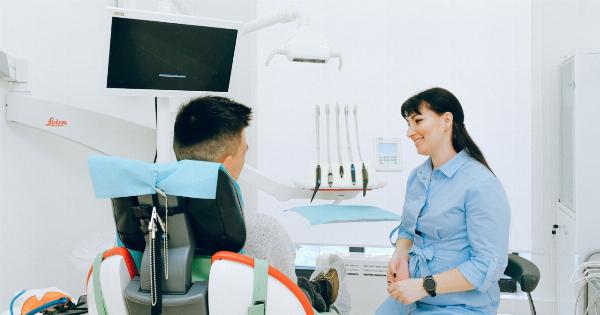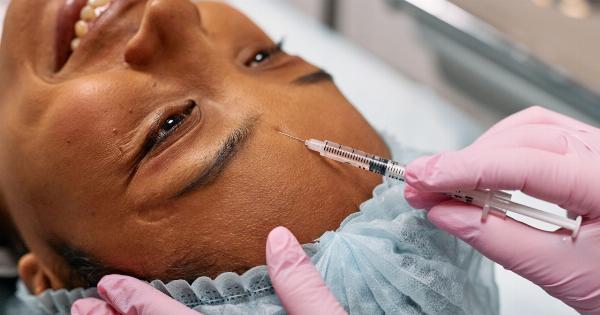Are you looking to enhance your appearance or fix asymmetries in your body? Fat implantation might be the solution you’ve been searching for.
This innovative procedure allows surgeons to transfer fat from one area of the body to another, providing natural-looking results and long-lasting effects. In this ultimate guide, we will explore everything you need to know about fat implantation, including how it works, the benefits, potential risks, and recovery process.
1. What is Fat Implantation?
Fat implantation, also known as fat grafting or fat transfer, is a cosmetic procedure that involves the removal of excess fat from one area of the body and its subsequent injection in another area.
This technique utilizes the patient’s own fat to enhance volume, shape, and contour in desired areas, such as the face, breasts, buttocks, or hands.
2. How Does Fat Implantation Work?
The fat implantation process typically involves the following steps:.
Step 1: Harvesting the Fat.
The surgeon will identify donor sites with excess fat, such as the abdomen, thighs, or hips. Through a minimally invasive liposuction technique, fat cells are carefully extracted using a thin cannula.
Step 2: Processing the Fat.
Once harvested, the fat cells are prepared for injection. The extracted cells undergo a purification process to remove impurities, blood, and oil before being carefully processed for transfer.
Step 3: Injection.
The purified fat cells are meticulously injected into the targeted area using fine needles. The surgeon strategically places the fat cells to ensure a balanced and natural appearance. Multiple injections may be required to achieve the desired outcome.
3. Benefits of Fat Implantation
Fat implantation offers numerous benefits over other cosmetic procedures:.
Natural-looking Results: Since the patient’s own fat is used, the outcomes appear and feel natural.
Long-lasting Effects: Fat grafting results can last for several years, providing a permanent solution to volume loss or asymmetry.
Minimally Invasive: Fat implantation involves minimal incisions, resulting in smaller scars compared to traditional surgeries.
Enhances Multiple Areas: Fat transfer can be employed to improve various body regions simultaneously, reducing the need for multiple surgeries.
Safe Procedure: As fat grafting uses the patient’s own cells, the risk of allergic reactions or rejection is minimal.
4. Candidates for Fat Implantation
Selecting the right candidates for fat implantation is crucial to ensure optimum results. Suitable candidates generally possess the following characteristics:.
– Adequate fat deposits in donor areas
– Desire for augmentation or correction of specific body areas
– Good general health without any active infections or serious medical conditions
– Realistic expectations regarding the outcomes of the procedure.
5. Potential Risks and Complications
While fat implantation is generally considered safe, there are potential risks and complications associated with the procedure. These can include:.
– Infection
– Bleeding or hematoma
– Fat necrosis (cell death)
– Irregularities in contour or texture
– Scarring
– Asymmetry
– Absorption of transferred fat.
It is essential to discuss these risks with your surgeon and follow their post-operative instructions to minimize potential complications.
6. Recovery Process
The recovery process after fat implantation varies from person to person, but most individuals can expect the following:.
– Swelling and bruising: Swelling and bruising are common after the procedure, but they typically subside within two weeks.
– Pain and discomfort: Mild pain or discomfort may be experienced, which can be managed with prescribed medications.
– Avoiding pressure: It is crucial to avoid applying pressure to the treated area for a few weeks to ensure optimal fat cell survival.
– Rest and relaxation: Adequate rest and avoiding strenuous activities for several weeks are necessary to promote proper healing.
– Follow-up appointments: Regular follow-ups with your surgeon are essential to monitor the progress and address any concerns.
7. Cost of Fat Implantation
The cost of fat implantation can vary depending on several factors, including the extent of the procedure, the expertise of the surgeon, geographic location, and additional fees associated with the operating facility.
On average, fat grafting can cost around $4,500 to $10,000.
8. Finding the Right Surgeon
Choosing a skilled and experienced surgeon is crucial for a successful fat implantation procedure. Consider the following when selecting a surgeon:.
– Board certification and credentials
– Extensive experience in fat implantation
– Positive patient reviews and testimonials
– Before and after photos showcasing their work
– Transparency in discussing the procedure, risks, and expected outcomes
– A comfortable rapport and open communication with the surgeon.
Take your time to research and consult with multiple surgeons before making your final decision.
9. Frequently Asked Questions
Q: Is fat implantation permanent?.
A: While fat implantation provides long-lasting results, the body naturally absorbs a portion of the transferred fat over time. The remaining fat, however, tends to be permanent.
Q: Can fat implantation be combined with other procedures?.
A: Yes, fat implantation can be combined with other cosmetic procedures, such as facelifts or breast augmentations, to achieve comprehensive results.
Q: Is fat implantation painful?.
A: The procedure is usually performed under anesthesia, ensuring a pain-free experience during the surgery. Mild discomfort and pain can be managed with prescribed medications during the recovery phase.
10. Conclusion
Fat implantation provides a versatile and effective solution for individuals seeking natural enhancements or corrections in their bodies.
By harvesting excess fat from one area and carefully injecting it into another, fat implantation allows for long-lasting, safe, and satisfying results. To achieve the best outcomes, it is essential to select a skilled surgeon, follow pre and post-operative instructions diligently, and maintain realistic expectations throughout the process.



























